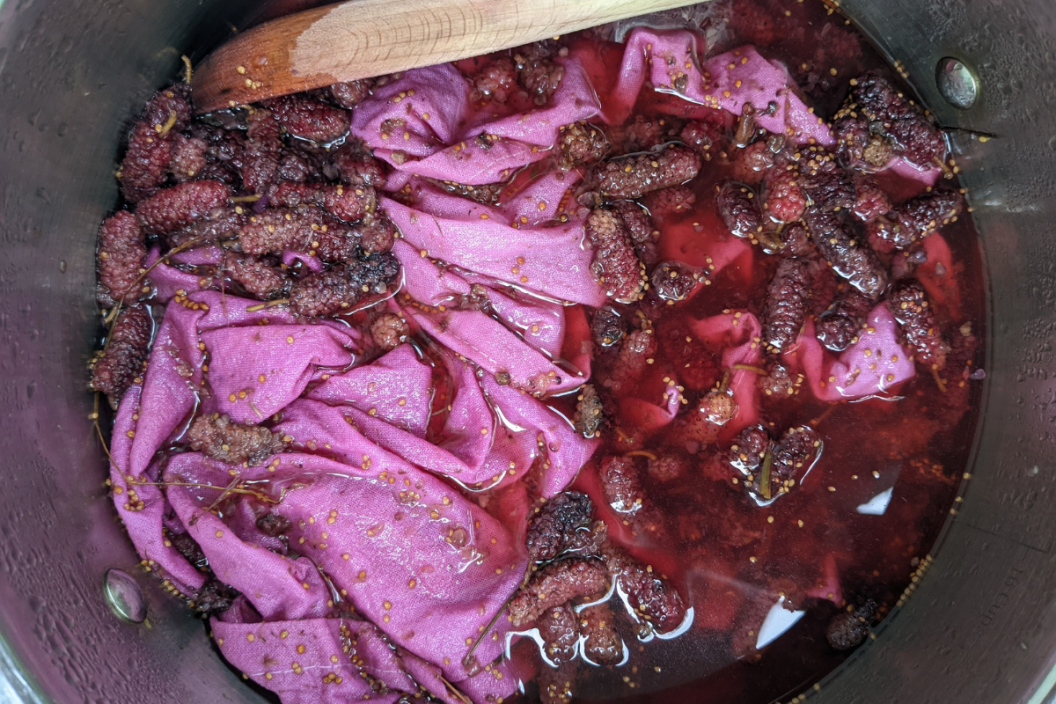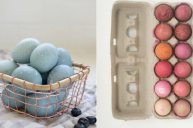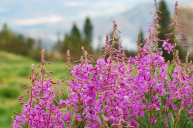Although natural dyes may not always be as bright as chemical dyes, creating dye from food in your garden and kitchen is such a magical process that has immense grounding powers. Natural dyes create the most beautiful, earthy colors and are such a joy to dye with. I have learned so much from making natural dye over the years, and one of the biggest lessons is how to let go and surrender to the beauty of the process and the unexpected results from all-natural DIY projects. I have been so pleasantly surprised by so many different turnouts! Who knew that avocado skins and pits would make the most gorgeous peachy pink ever?
The optimal process for each plant is going to be different, as each plant has a different chemical makeup. Everything from the mordant (which preps the fabric to receive the dye) to the temperature used, and the fabric used, can change the outcome vastly. Because of this, I tend to do a bit of research before using a plant to see what techniques other people have used and were happy with, and then follow my gut for the rest. But the basic process is pretty similar for each.
10 Plants That Make Beautiful Natural Dyes

Marigolds
An annual flower with rounded flower heads, these flowers tend to be yellow or orange and lend themselves to be a wonderful natural dye. Once the flowers are dried, steep in water and you'll be greeted with a cheerful pale yellow.
Amaranth
Amaranth, especially the Hopi red dye variety, is traditionally used by the Hopi, a Native American tribe in Arizona. Its deep red colored foliage creates a light pink color on fabrics.
Pansies
Pansies, which are short-season perennials, make a wonderful purple hue when steeped in water. One of the unusual things about pansies is that you can also hammer them into the fabric after mordanting to leave a beautiful print of the flower on it.
Spinach
Perfect for fabric (or eggs!), spinach creates a sublime green dye. The only thing to note is that this process requires a lot of spinach!
Onions
Red or yellow are the colors you'll create from onions, depending on what kind of onion you have on hand. Simply save the skins from dinner for a few weeks and you'll have enough for a big batch.
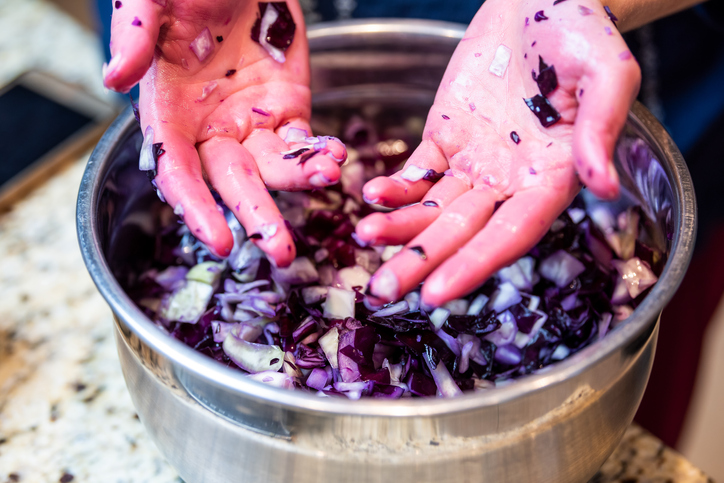
Red Cabbage
Unsure what to do with your leftover cabbage? Use it for a deep purple dye.
Black Beans
Don't throw out that black bean water! Once you've soaked your dried black beans, remove the beans (to cook) and soak your fabric in the black-blue water that remains.
Beets
It's a no-brainer that beets (that tend to stain the cutting board!) is a great carrier of colorful dye. I love how light the pink is!
Avocado Skins
All that avocado toast has to be good for something, right? Save the skins and the pits for the most beautiful shade of light pink.
Mulberries
Subdued and soft, mulberries give off a faint purple dye. Be warned, after each wash, the dye will fade.
Pokeweed
Native to the South, these berries are poisonous if ingested, but make a mighty pretty reddish purple dye.
Other plants include Turmeric for bright yellow, tea for brown. Blueberries make a very subtle purple blue, and pokeweed which grows naturally and wildly here in the south make a fantastic pink. I find that dyes used with berries, although the color is absolutely stunning while dying, tend to wash out and turn much lighter shades. They're still beautiful, but less vibrant as the dyes made from vegetables and flowers.
What you need to start:
A Mordant such as salt and vinegar, iron and vinegar, or Alum, which can be found at most grocery stores or on Amazon.
A Separate dye pot. This is important so that you don't accidentally poison your food, especially if you're using toxic materials like pokeweed! Grabbing a pot from a secondhand store is perfect for this.
100% natural fabric such as cotton, linen, wool or silk. These are more porous and will take on more color from the dye bath. You can find these in craft stores or secondhand shops.
The Process
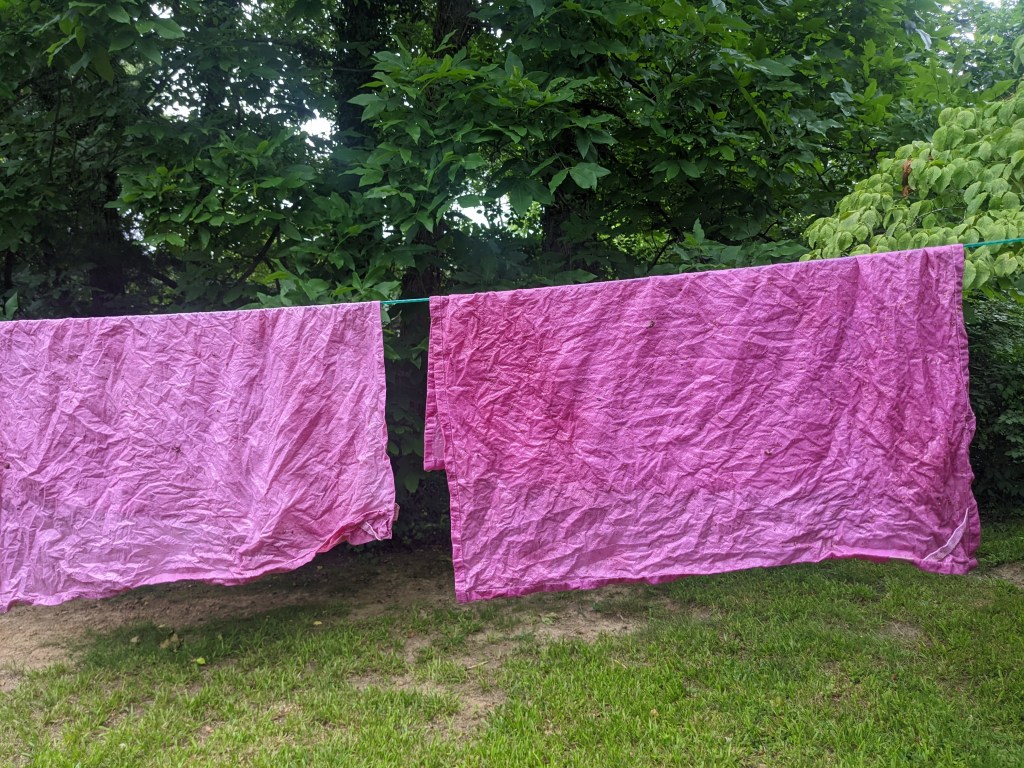
Frankie Larson
Pre-wash your fabric with natural soap or soda ash. Measure out your mordant (make enough to cover the fabric fully) and dissolve into water. Let simmer, adding the fabric to simmer and absorb the mordant for at least an hour. Keep wet, as it needs to go into the dye bath wet.
Make the Dye

Frankie Larson
I typically aim to pick enough berries, flowers, or vegetables that will be double the weight of the fabric when dry. After gathering your natural materials, cover with cold water and heat to a simmer. Do not boil! This will turn almost everything brown and you'll lose your beautiful color.
The key here is low and slow. Mash your materials to release more color. Once you're satisfied with the color, remove from heat and strain. (Or don't- I've had luck with some dyes by leaving in the raw materials until the end). Add your fabric (rewetting if it has dried out). Soak for 30 minutes or more. I often will leave it in the dye in a jar overnight to make sure the color has transferred. Wash and dry and admire your beautiful colors!
Have fun with this! Experiment! And make sure to take a clipping from each dye bath and write down on it what process you used. This has been so helpful for me in remembering what works and what doesn't! You'll be absolutely charmed by the colors that come forward from ingredients in your yard and kitchen.
READ MORE: Use Our 5 Helpful Tips to Keep Those Fresh Flowers Around Longer
